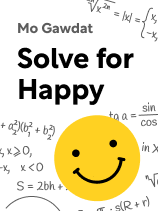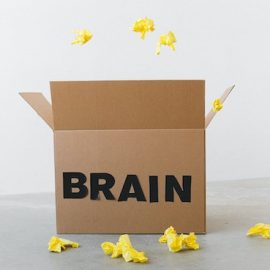

This article is an excerpt from the Shortform book guide to "Solve for Happy" by Mo Gawdat. Shortform has the world's best summaries and analyses of books you should be reading.
Like this article? Sign up for a free trial here.
Are you and your body one and the same? What difference does it make?
In Solve for Happy, Mo Gawdat outlines an algorithm for happiness. It involves dispelling several misconceptions that cause us to suffer. One of these is the notion that our minds and our bodies are the same rather than distinct from each other.
Read more to learn how you are not your body and what difference that makes for your happiness.
You Are Not Your Body
The misconception that you are your body stems from the perception of self. Gawdat claims that people typically identify with their bodies. But, on the contrary, Gawdat argues that you are not your body; you are a non-physical observer of your body.
(Shortform note: So-called “out-of-body experiences,” where people report observing their physical bodies from a vantage point outside of them, arguably provide empirical evidence for this thesis. Scientists even concede that out-of-body experiences are difficult to understand if our mind is purely physical.)
His argument depends on what he calls the “perception test” and the “permanence test.” The perception test dictates that, if you’re able to observe an object, you’re distinct from it. (Shortform note: This is closely related to Gawdat’s argument that you are not identical to the voice in your head because you can perceive it.) The permanence test dictates that, if one of your qualities changes while you remain unchanged, you’re not identical to that quality.
(Shortform note: The permanence test can be derived from Leibniz’s Law, which states that two objects are identical only if the second object has every property that the first object has, and vice versa. Because change is itself a property, then two objects can be identical only if they change simultaneously, per the permanence test.)
Your body fails both tests. First, it fails the perception test because we can easily perceive our body. Second, it fails the permanence test because our body undergoes change while we remain unchanged; for instance, your body cycles through millions of skin cells daily, but you’re still you.
Since we aren’t identical to our body, Gawdat concludes that we’re non-physical observers of it—thus, the events that impact our physical bodies don’t affect our true selves. When we realize that we’re not our bodies, we perceive the harms that befall them with indifference and our perception of life improves.
| Dualism and the Mind-Body Problem Far predating Gawdat’s claim that our true self is non-physical, Rene Déscartes articulated the same view, referred to as Cartesian substance dualism, which states that our body is simply a vehicle through which our immaterial soul perceives the world. However, substance dualism faces a potent objection—the mind-body problem—which asks how a non-physical entity can causally interact with a physical entity. In other words, how could a non-physical object, like the soul, cause a physical object, like your arm, to move? Because we only witness causal relations between physical objects—like one billiards ball causing another to move toward the corner pocket—it’s unclear how a non-physical object could impact the physical realm. In response, Déscartes speculated that our soul interacts with our brain via the pineal gland. However, no evidence substantiates this claim. Instead, modern dualists like William Hasker have suggested that the soul emerges via the brain, allowing for the possibility of a scientific explanation of this relationship. |

———End of Preview———
Like what you just read? Read the rest of the world's best book summary and analysis of Mo Gawdat's "Solve for Happy" at Shortform.
Here's what you'll find in our full Solve for Happy summary:
- The six misconceptions that cause us to suffer
- How to remove the seven weaknesses that hinder your happiness
- The five pillars to becoming permanently happy






